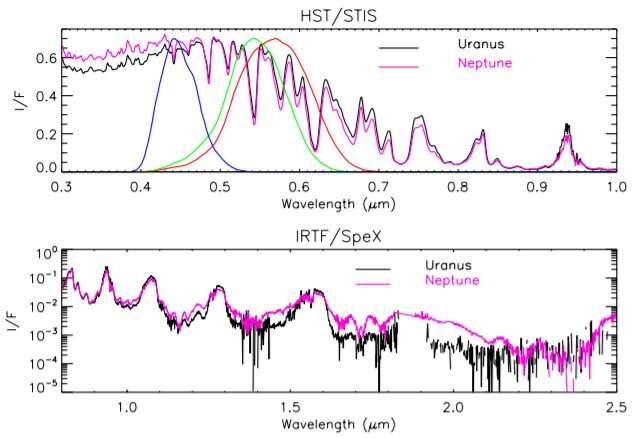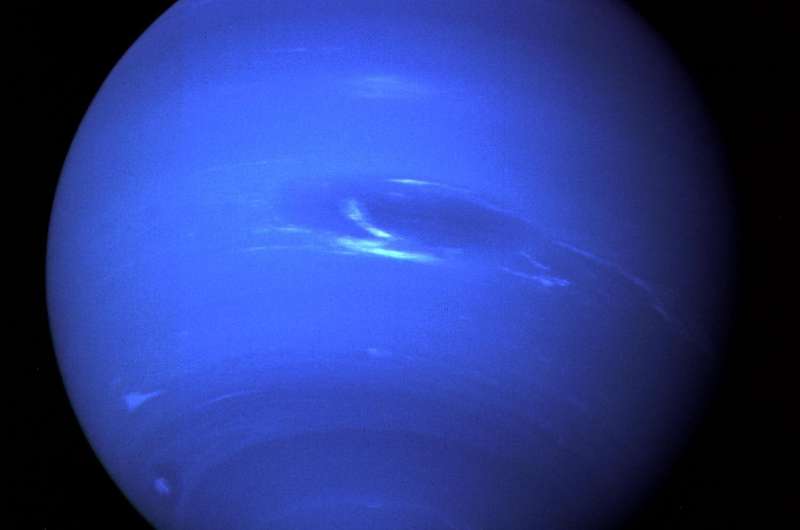February 1, 2022 report
A possible explanation for the difference in the blue hues of Uranus and Neptune

A team of researchers affiliated with several institutions in the U.K. and the U.S. has found a possible explanation for the difference in the blue hues of Uranus and Neptune. They have published a paper outlining their findings on the arXiv preprint server.
Planets such as Mars and Jupiter have received a lot of attention from the space science community, but two other planets have not—data on Uranus and Neptune is scarce because no probes have been sent to study them. Currently, the only information scientists have is data sent back from Voyagers 1 and 2 more than 30 years ago and from telescopes here on Earth and in orbit. In this new effort, the researchers sought to learn more about both planets and specifically to determine why one of them has a darker blue hue than the other.
The work by the researchers involved gathering and analyzing data from Voyagers 1 and 2, multiple ground-based telescopes and Hubble. They created models that likely represent the atmospheric conditions on both planets. The models showed that both have nearly equal atmospheric pressure and that both hold large amounts of hydrogen sulfide, ice and photochemicals. They also showed both planets have a hazy upper atmospheric layer with lower pressure. The researchers suggest that the haze for both planets is produced by materials in the atmosphere that are pushed upward until they become concentrated to a point that the methane condenses. They then become seeds that lead to flake formation, which fall until their particles are released and used as part of new cloud formation.

The model also showed Uranus' atmosphere to be thicker than Neptune's, which is why Neptune is darker blue than Uranus—and both are blue because methane reflects blue light. The researchers also found that Neptune is not as uniformly colored as previously thought. They found dark spots, which they suggest are likely more highly concentrated materials in the upper atmospheric layer. They conclude that in addition to providing more data about both Uranus and Neptune, their work could also be used as a platform for studying similar planets orbiting other stars.
More information: Patrick G.J. Irwin et al, Hazy blue worlds: A holistic aerosol model for Uranus and Neptune, including Dark Spots. arXiv:2201.04516v1 [astro-ph.EP], arxiv.org/abs/2201.04516
© 2022 Science X Network





















